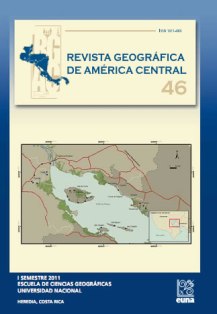LA ZONIFICACIÓN DE AMENAZA POR INUNDACIÓN COMO HERRAMIENTA PARA EL ORDENAMIENTO TERRITORIAL EN EL VALLE DEL RÍO SIXAOLA
Keywords:
Amenazas naturales, ordenamiento territorial, zonificación de inundaciones, río Sixaola, Natural hazards, land planning, flood zoning, Sixaola RiverAbstract
En el caso de Costa Rica, uno de los eventos naturales que reviste especial importancia por su frecuencia y daños acumulativos son las inundaciones; una herramienta para reducir los constantes desastres es la zonificación de amenazas por inundación. Mediante esta técnica es posible orientar el ordenamiento territorial y facilitar la gestión del riesgo. La cuenca del río Sixaola es una de las más afectadas por inundaciones en Costa Rica, en la parte baja se ubican asentamientos humanos habitados principalmente por núcleos de población altamente vulnerables. En este artículo se presenta la zonificación de amenaza por inundación, elaborada para el río Sixaola.
ABSTRACT
In the case of Costa Rica, one of the natural events of particular importance because of its frequency and cumulative damage is flooding. A tool to reduce this ongoing disaster is flood hazard zoning.
Using this technique it is possible to guide land use planning and facilitate risk management. The Sixaola River Basin is one of the most affected by flooding in Costa Rica, and inhabitants of villages in the lower settlements are highly vulnerable. This article presents the flood hazard zoning plan developed for the Sixaola River.
Downloads
How to Cite
Issue
Section
License
Proposed policy for journals offering Open Access
Authors publishing their works in the Journal acknowledge and agree to the following terms:
a) Authors retain the copyrights to their works and guarantee the Journal the right to be the first to publish their works, under the Creative Commons License Attribution-NonCommercial-ShareAlike 4.0 International, CC BY-NC-SA 4.0 International (https://creativecommons.org/licenses/by-nc-sa/4.0/deed.es), which allows others to share works upon complying with the acknowledgment of authorship and mention of the Journal as the original publisher of the work.
b) Authors are permitted to separately establish additional agreements for the non-exclusive distribution of the official edition of the work published in the Journal (for example, authors may desire to place the work in an institutional repository or incorporate it into a book that is to published elsewhere) so long they acknowledgment to recognize the Journal as the original publisher. The aforementioned additional agreements must respect the terms of the non-profit character and sharing philosophy of the original license (CC BY-NC-SA 4.0 International, https://creativecommons.org/licenses/by-nc-sa/4.0/deed.es).
c) Authors are encouraged to archive the post-print or editor/PDF version in Open Access repositories.






 REVGEO is licensed under https://creativecommons.org/licenses/by-nc-sa/4.0/deed.es
REVGEO is licensed under https://creativecommons.org/licenses/by-nc-sa/4.0/deed.es
.svg_4.png)

_(1).png)
_(1)_(1)_(1)_1.png)
(2)(1)(1)(1).png)
